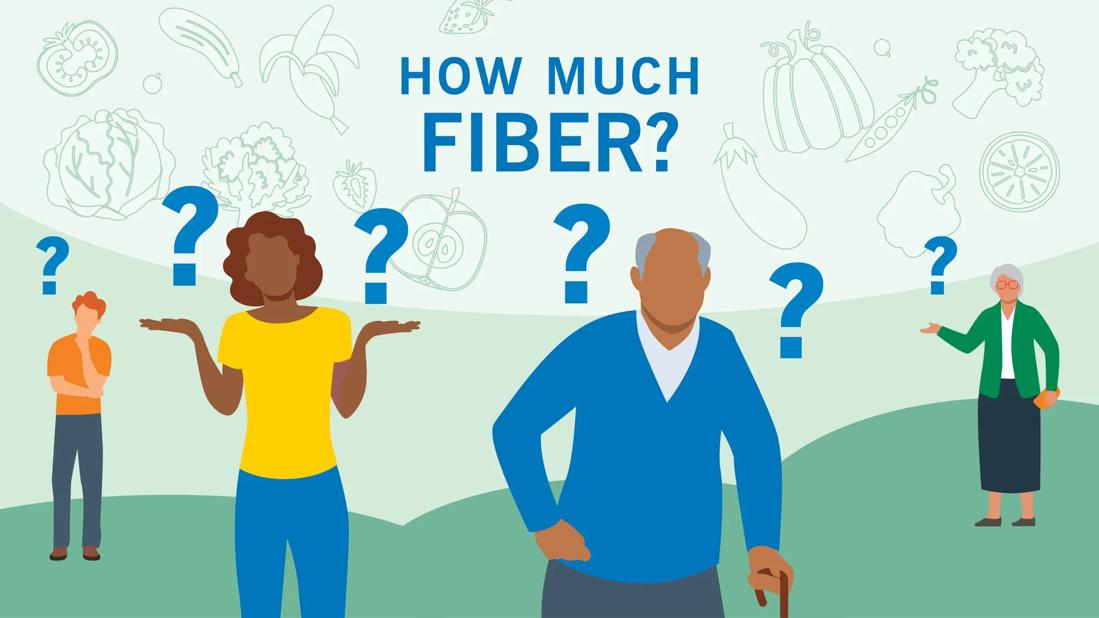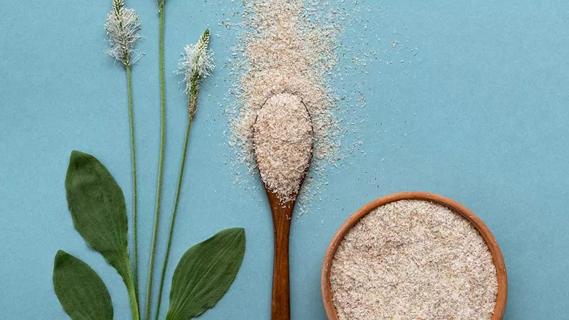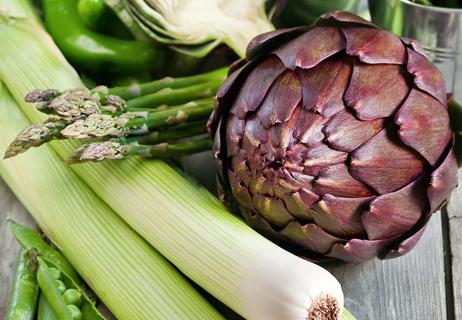Most adults aren’t getting enough of the essential nutrient

Fiber reigns supreme when it comes to keeping your gut and heart happy. It also helps you feel full longer. This small nutrient has a big impact on your health. But how much fiber per day should you be getting?
Advertisement
Cleveland Clinic is a non-profit academic medical center. Advertising on our site helps support our mission. We do not endorse non-Cleveland Clinic products or services. Policy
The U.S. Department of Agriculture and U.S. Department of Health and Human Services Dietary Guidelines for Americans, 2020-2025, breaks down its dietary fiber recommendations by sex. This includes a combination of both soluble and insoluble fiber.
| Age | Women | Men |
|---|---|---|
| 19-30 | 28 grams | 34 grams |
| 31-50 | 25 grams | 31 grams |
| 51 and older | 22 grams | 28 grams |
| Age | ||
| 19-30 | ||
| Women | ||
| 28 grams | ||
| Men | ||
| 34 grams | ||
| 31-50 | ||
| Women | ||
| 25 grams | ||
| Men | ||
| 31 grams | ||
| 51 and older | ||
| Women | ||
| 22 grams | ||
| Men | ||
| 28 grams |
While these guidelines provide some direction on how much fiber per day for a woman or a man, other factors can affect your daily fiber needs, too.
“Unfortunately, these official recommendations don’t account for bodily differences like weight, height and overall health,” notes registered dietitian Beth Czerwony, RD, LD. “If you’re not sure how much fiber daily you need, ask your healthcare provider for individualized guidance.”
You probably need more fiber than you’re currently getting. Studies show that only about 5% of U.S. adults get enough fiber in their diets, with most people consuming only about 16 grams (g) per day.
Czerwony shares some advice on the best ways to get more fiber.
It’s always best to try to get your vitamins, minerals and other nutrients through your diet — and fiber is no different.
“It’s important to get fiber sources from a variety of fruits, vegetables, whole grains, beans and legumes in order to have a healthy and balanced diet,” Czerwony says.
Advertisement
Try these four food groups that are high in fiber:
There are countless ways to add fiber into your diet. Here are a few tips to consider throughout the day:
“You can also sprinkle bran, ground flaxseed or chia seed into soups, cereals, spaghetti sauce, casseroles or yogurt,” Czerwony suggests. “They add a big hit of fiber without changing much in the way of taste.”
A key piece of advice when it comes to upping how much fiber you eat? Go slow, says Czerwony. Adding too much fiber all at once can cause bloating and cramping.
“To avoid bloating and gas, add in no more than 5 grams of fiber per week until you reach your individual goal,” she recommends.
Water is vital for many reasons, but when it comes to fiber, it’s essential to keep your bowel movements regular. If you’re adding fiber, make sure you drink plenty of water. If not, it can lead to constipation.
If you’re having a hard time getting enough fiber from the foods you eat, your healthcare provider may recommend a supplement.
“Food is your best source of fiber, but supplements can help if you’re not able to get adequate amounts through diet,” Czerwony reiterates.
Just be sure to speak with a healthcare professional before taking any supplement, fiber included.
“How much fiber do I need a day?” It’s one of the most common questions Czerwony and other dietitians hear. And while dietary fiber guidelines can give you a good starting point, in many cases, you’ll need to increase your fiber intake.
Remember, “Fiber is crucial for overall health by aiding in blood sugar management, its positive impact on digestion and heart health,” says Czerwony.
Advertisement
Learn more about our editorial process.
Advertisement

This carbohydrate helps you avoid constipation, stabilize blood sugar, lower cholesterol and stay fuller longer

Choose foods that are easily broken down in your digestive system, like fruits and vegetables without skins or seeds

This spiny sea veggie may help your heart, gut, immune system and more

The fiber supplement can help ease constipation, manage diabetes and lower LDL cholesterol

In a world of confusing choices, your healthcare provider can be your best resource

10 delicious dishes with 10+ grams of fiber per serving

From blackberries to barley, healthy high-fiber foods are plentiful

This prebiotic is found in a lot of foods that you probably already eat

Babies can get congested easily, but you can calm their cough by keeping them hydrated, using nasal drops and running a humidifier

Weight loss may cause loose, sagging skin and muscle loss to your rear

Several conditions, like vitiligo and fungal infection, can cause a loss of pigmentation, leading to white spots or patches on your skin